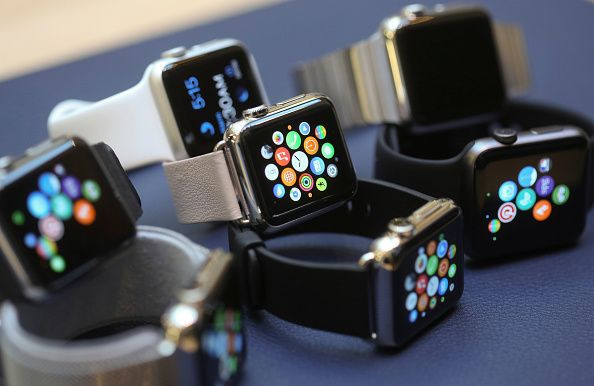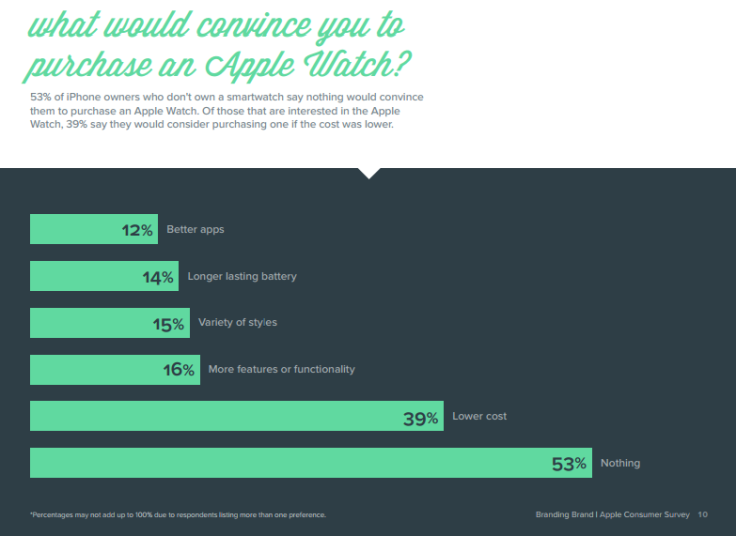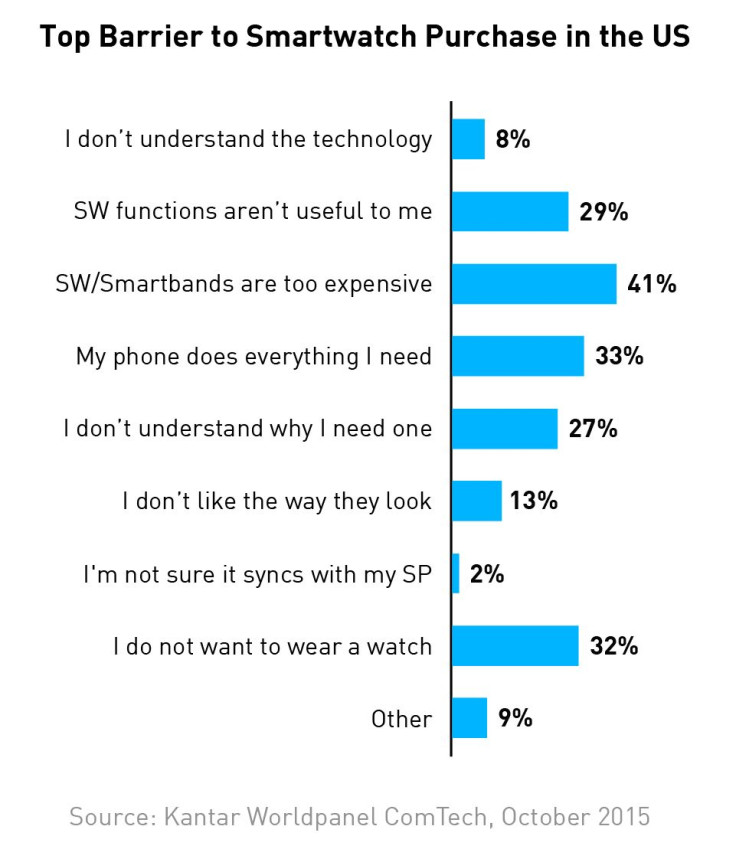Apple Watch Update: A Year In, What’s Ailing The Smartwatch Market?

It’s been nearly a year since the first Apple Watch went on sale, but so far the smartwatch market has been more a quiet pop than the big boom everyone expected. Apple is thought to have sold 8 million to 12 million Apple Watches so far — well below early Wall Street forecasts ranging from 20 to 30 million units.
Despite loads of initial marketing, these gadgets are still largely in the background, rather than the consumer spotlight. It's not just Apple: in 2015, the rest of the smartwatch market largely underwhelmed, with all Android Wear smartwatch manufacturers shipping an estimated 3.2 million units, according to IDC.
Depending who you ask, a number of problems ranging from battery life to third-party apps are holding back the smartwatch. Here’s a look what's ailing the market.
Demonstrating the Need
Most analysts agree on one point: Most manufacturers have failed to show why a smartwatch can be essential in day-to-day life. “Consumers don’t actually see the need for them,” said Carolina Milanesi, Kantar Worldpanel Comtech head of U.S. research. “The reality is the phone pretty much does everything you want.”
That leaves manufacturers with the more difficult task of showing the nuanced ways the smartwatch is a unique product, such as its ability to display notifications and messages to its wearer without the need for whipping out a smartphone frequently.
"The challenge we have with the [smartwatch] category at large is it's a little foreign to most consumers," said Ben Bajarin, principal analyst at Creative Strategies. "There's a lot of things that you have to learn that you didn't know before you owned one."
Battery Life
Smartwatch manufacturers may brag about all the features on their gadget, but at the end of the day, it’s still another thing to add to the top of the device-charging pile — especially if it doesn’t last more than 24 hours. “If you have less than a day battery life, then you're practically a nonstarter at this point,” said Ramon Llamas, IDC wearables team research manager. “Nobody wants to carry an extra cord. We want our watches to last just as much as we do at any given day.”
Smartwatches in early 2015, such as the Apple Watch, were hard pressed to squeeze out more than a day of battery life. But it’s an area that is starting to see improvement — the Samsung Gear S2, for example, boasts about two to three days of power between charges.
Slow and Limited Apps
While the smartwatch packs a lot of smart features into a smaller package, slow performance can be a deal breaker for some consumers. In a survey of 330 dissatisfied Apple Watch owners in November, top reasons for ditching the smartwatch were related to performance, according to Wristly. “Key performance areas were most frequently cited, with 80 percent blaming limited feature-set, 66 percent rating it as too slow and 59 percent unhappy with the battery life,” Wristly CEO Bernard Desarnauts wrote in a blog entry.
And despite 10,000 third-party apps on the App Store for the Apple Watch, the feature is hardly one of the top priorities for consumers who own the smartwatch, especially given their sluggishness. "The performance of apps are still relatively sluggish," Bajarin said. "I think once that gets solved, we’ll start to see a lot more runway in terms of apps, how people use them and developers starting to embrace it."
Consumer Indifference
On one side of the coin, some consumers are just holding out from purchasing their first smartwatch. Of 1,500 people surveyed that intend to purchase a smartwatch over the next six months, about 74 percent think wearable technology is exciting, but for one reason or another have held off on buying a device, according to IDC. But on the other side, not everyone is eager to get a smartwatch. Of over 1,000 iPhone owners surveyed in the U.S. in February, 53 percent said nothing would convince them to purchase an Apple Watch, according to Branding Brand.

Cheaper Alternatives
If consumers want a fitness-tracking gadget, there’s also plenty of alternatives that are far cheaper than the $349 base price tag of an Apple Watch Sport and other pricey smartwatches. In comparison, a Fitbit activity tracker runs consumers anywhere from $80 to $200. The wrist-worn fitness trackers were especially popular during winter holiday shopping season, which saw 8.1 million FitBits shipped, up 52.8 percent from the same period in 2014. In comparison, Apple sold 4.1 million watches in the same timeframe. In the United States, of 11,000 people surveyed in October, 41 percent didn't purchase a smartwatch because it was too expensive, according to Kantar Worldpanel Comtech.

© Copyright IBTimes 2024. All rights reserved.





















